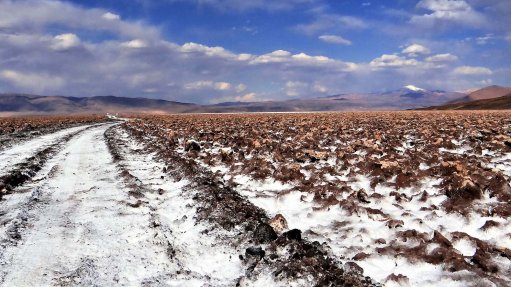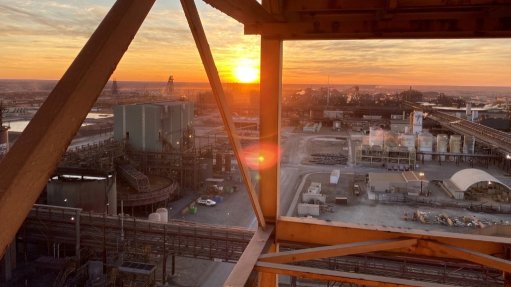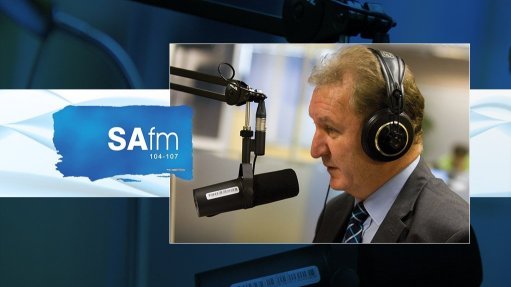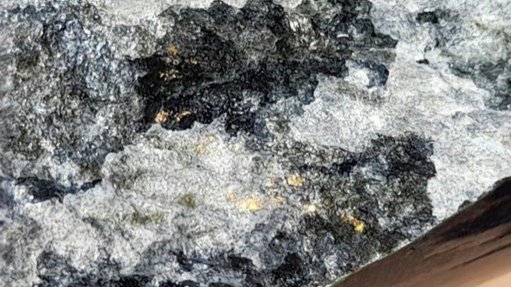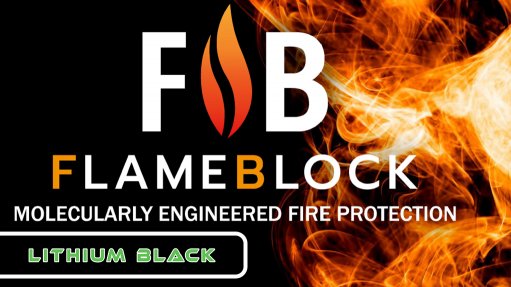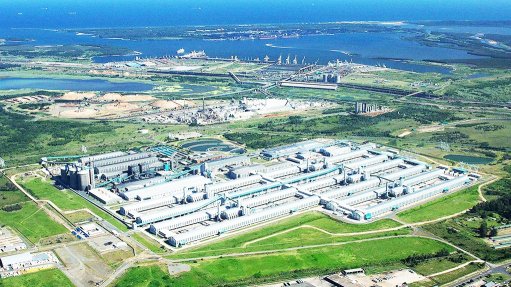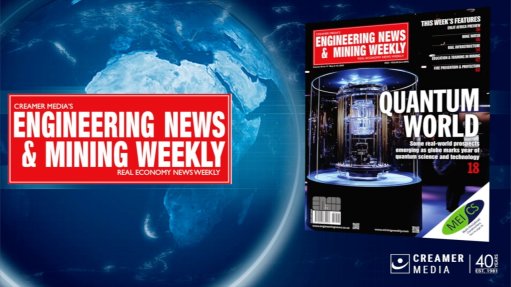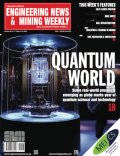Imperial reports significantly improved scandium/REE recoveries
Early results from TSX-V-listed Imperial Mining’s process flowsheet optimisation work have shown significantly improved scandium and rare-earth element (REE) recoveries.
The Canada-based company said on Tuesday that it was undertaking a hydrometallurgical flowsheet optimisation development programme, which was based on a patent-pending two-stage hydrometallurgical method for the extraction of scandium and REE with technical services provider SGS Canada.
The programme is being partially financed from a $245 355 grant issued by the Québec Ministry of Energy and Natural Resources, which was awarded in February.
The flowsheet development programme is focused on further optimising the mineral processing flowsheet by rejecting olivine, a non-scandium- and non-REE-bearing mineral, while also focusing on bulk processing of olivine-depleted scandium/REE mineral concentrate through the patent-pending high-pressure hydrometallurgical process to generate sufficient primary leach solution, to optimise the recovery circuits of the flowsheet.
The optimisation work to date has shown an 11% improvement in scandium recovery, which was at 96% at the leaching stage compared with the previous 85% achieved in the initial lab results.
The recovery of REE has also increased from 84% to 94%.
Imperial said that the improved metal recoveries would positively impact the financial model presented in the June 13 preliminary economic assessment (PEA) announcement.
In addition to the improved scandium and rare earth recoveries, the programme’s objectives are to lower project operating and capital costs and reduce the carbon footprint of the metallurgical process.
The optimisation study that started on January 31 is expected to be completed by the end of the third quarter. Results from the work will be used for a formal US Patent application and aid in the engineering design of Imperial’s pilot programme for the Crater Lake project in Québec to start next year.
“The much-improved recoveries reported from the current optimisation work will significantly impact the financial model reported in our PEA announcement last month . . . The recovery improvements were obtained from scale-up of our metallurgical process when compared to our initial lab-scale test results reported in 2020. We continue our optimisation work [to] further reduce the operating risk presented by our PEA last month,” said Imperial president and CEO Peter Cashin.
In addition, exploration crews have now mobilised to the Crater Lake property to begin planned summer work.
CRATER LAKE EXPLORATION
Imperial’s exploration work will be geared towards getting the Crater Lake scandium/REE project ready for definitive feasibility study activities.
For this to be accomplished, a 2 500 m in-fill diamond drill programme will be required for the current resource at the TG Zone Northern Lobe. The objective of this work will be to convert all previously-defined inferred resources – which was 13.2-million tonnes at 264 g/t scandium oxide (Sc2O3) – to the indicated and measured mineral resource category.
Further, the company said that it intended to drill test extensions of scandium-mineralised intersections returned in 2019, which showed 310 g/t Sc2O3 over 113.9 m, at the Southern Lobe of the TG zone mineralised horizon. This zone showed “excellent potential” to increase the known tonnage and grade of the scandium and REE mineralisation relative to the Northern Lobe, which were interpreted to constitute a continuous 800-m-long mineralised system.
A detailed assessment of historical high-grade REE niobium and tantalum occurrences, north and northwest of the Crater Lake complex, known as the Crater Lake Extension property area, was undertaken during the winter and previous summer programmes.
In this area, 2010 grab sampling results of up to 9.28% Nb2O5, 13.4% zirconium, 2.4% total rare-earth oxides plus yttrium (TREO+Y) and 3 020 ppm tantalum were returned requiring further investigation. The area coincides with extensive TREO+Y-Nb-Ta geochemical and radiometric anomalies over the areas of the occurrences. Imperial’s plans are to drill a short, vertical diamond drillhole into the core of the occurrence area to test the vertical extent of the sub-horizontal mineralised system.
The drilling is expected to start soon, the company said.
Results from the drill core sampling programme will be reported throughout the northern hemisphere’s current summer and autumn period.
Imperial said that it also planned to ship the remaining 32-t bulk sample prepared over the STG zone from the project site to its storage facility located in Sept-Iles, Québec. This material will be used in a pilot plant study to further test and optimise Imperial's metallurgical process method.
Comments
Press Office
Announcements
What's On
Subscribe to improve your user experience...
Option 1 (equivalent of R125 a month):
Receive a weekly copy of Creamer Media's Engineering News & Mining Weekly magazine
(print copy for those in South Africa and e-magazine for those outside of South Africa)
Receive daily email newsletters
Access to full search results
Access archive of magazine back copies
Access to Projects in Progress
Access to ONE Research Report of your choice in PDF format
Option 2 (equivalent of R375 a month):
All benefits from Option 1
PLUS
Access to Creamer Media's Research Channel Africa for ALL Research Reports, in PDF format, on various industrial and mining sectors
including Electricity; Water; Energy Transition; Hydrogen; Roads, Rail and Ports; Coal; Gold; Platinum; Battery Metals; etc.
Already a subscriber?
Forgotten your password?
Receive weekly copy of Creamer Media's Engineering News & Mining Weekly magazine (print copy for those in South Africa and e-magazine for those outside of South Africa)
➕
Recieve daily email newsletters
➕
Access to full search results
➕
Access archive of magazine back copies
➕
Access to Projects in Progress
➕
Access to ONE Research Report of your choice in PDF format
RESEARCH CHANNEL AFRICA
R4500 (equivalent of R375 a month)
SUBSCRIBEAll benefits from Option 1
➕
Access to Creamer Media's Research Channel Africa for ALL Research Reports on various industrial and mining sectors, in PDF format, including on:
Electricity
➕
Water
➕
Energy Transition
➕
Hydrogen
➕
Roads, Rail and Ports
➕
Coal
➕
Gold
➕
Platinum
➕
Battery Metals
➕
etc.
Receive all benefits from Option 1 or Option 2 delivered to numerous people at your company
➕
Multiple User names and Passwords for simultaneous log-ins
➕
Intranet integration access to all in your organisation





